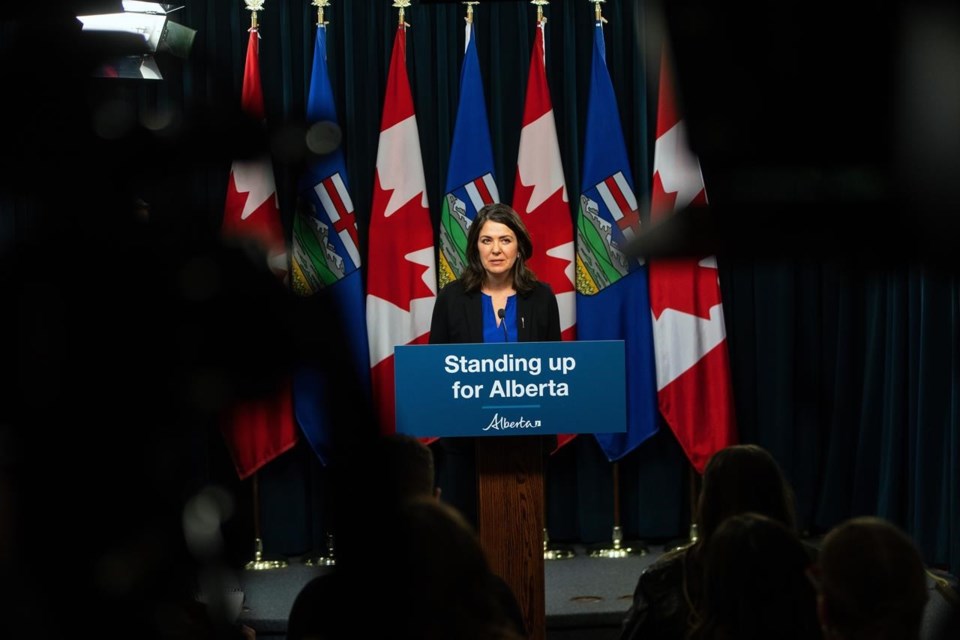EDMONTON ŌĆö Alberta Premier Danielle Smith introduced on Tuesday her signature bill called the Alberta Sovereignty Within a United sa╣·╝╩┤½├Į Act.
The United Conservative Party government says the proposed legislation would allow cabinet to direct provincial entities -- including Crown-controlled organizations, police, health authorities, municipalities, school boards -- to not use provincial money to enforce federal rules deemed harmful to Alberta's interests.
Smith says the bill is needed to reset Alberta's relationship with Ottawa and would be used to push back on issues including fertilizer restrictions, firearms, energy and health care.
Critics say it would give Smith and her cabinet broad powers to rewrite provincial laws behind closed doors.
This is how the government says the bill would work:
Motion for resolution ŌĆö A minister would introduce a motion for a resolution to use the act. The motion identifies a federal matter deemed unconstitutional or causing harm to Alberta and proposes measures Smith's cabinet should take.
Debate and vote ŌĆö Legislature members would debate the motion then vote for or against it. If a majority vote in favour, the resolution is passed.
Legal review ŌĆö Cabinet would consider next steps to make sure proposed actions are constitutional and legal.
Cabinet decision ŌĆö Cabinet would decide those next steps.
Cabinet instructions ŌĆö Cabinet may instruct provincial entities to take steps in response to the recommendations in the resolution.
Cabinet amendments ŌĆö Cabinet would work with the relevant minister and may amend any enactments, including legislation, orders or regulations.
This report by The Canadian Press was first published Nov. 29, 2022.
The Canadian Press


